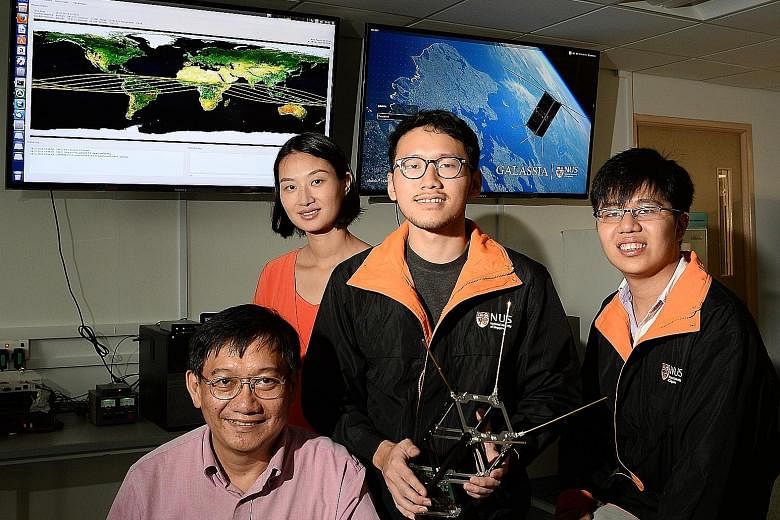National University of Singapore (NUS) systems engineer Eugene Ee was due to be in India to make the final crucial tweaks to a satellite just days before its launch on Wednesday night.
But the 26-year-old nearly missed the chance after his flight from Singapore to Chennai on Dec 5 was cancelled due to an airport closure. Without him, however, the university might not be able to send its first satellite into orbit.
A last-minute scramble for a flight to Bangalore and a bumpy nine-hour drive later, Mr Ee arrived at the Satish Dhawan Space Centre in Andhra Pradesh, India, much to the relief of his two team members and professor.
"I tried to keep calm and cool on the flight. But when I got there, I was just too exhausted to start work immediately," he said.
Early the next morning, he began work on Galassia, one of the six Singapore-made satellites that were successfully launched.
The experimental cube-satellite was developed by some 30 engineering undergraduates and research engineers over four years.
One of its missions is to measure the total number of electrons in the ionosphere, a region of the earth's upper atmosphere. The data collected would help improve the accuracy of Global Positioning System navigation and radio communications in space.
After he returned to Singapore on Dec 11, it was a roller coaster of emotions yet again when launch day came around, recalled Mr Ee.
"We were calm until they started showing the live launch video. We saw the rocket going up, and then it was in orbit," he said, as he watched from the team's lab on campus.
As the other satellites started their separation process, he held his breath till the words "Galassia separation" flashed on the screen.
He said, laughing: "My colleague and I had integrated the satellite in India and connected the cables between the satellite deployer and the launch rocket. If it didn't appear, it was going to be our fault."
Cheers erupted once they heard the first beacon from the satellite at about 10.18pm, confirming that it had established contact.
"That moment was emotional for me," said hardware engineer Ajie Nayaka Nikicio, 22, who had practised tracking other satellites and receiving data from them.
There is often no guarantee that a satellite would make a good pass over Singapore as it would depend on the duration and elevation, he said. A pass is when the satellite appears in view, allowing the ground station to make contact with it.
He said: "It was really wonderful that we communicated with the Galassia the first time it passed over Singapore."
Said Professor Goh Cher Hiang, the project director at the NUS Satellite Programme: "A lot of people don't realise that the satellite is 550km away. So for it to respond when you 'talk' to it, that's truly amazing. And if you can do it in the first pass, that is the best."
Both research engineers had been working on the satellite since they were undergraduates.
Their work will be validated when they collect the first primary data from space. For the NUS team, Galassia is the first step towards pushing the frontiers of space, hopefully to fulfil their dream of one day taking on lunar missions.
Correction note: An earlier version of this story stated project director Goh Cher Hiang's title as Associate Professor. It should be Professor. We are sorry for the error.


